Ground cover plants offer a dependable way to enrich your yard with color, structure, and resilience, especially when deer often wander through and disturb delicate plantings. Choosing varieties that naturally deter browsing wildlife allows homeowners to maintain lush, low-maintenance coverage without constant replacement or protective barriers. The plants listed below provide appealing textures, fragrances, and seasonal interest, making them trustworthy options for landscapes that need beauty as well as practicality.
1. Lavender
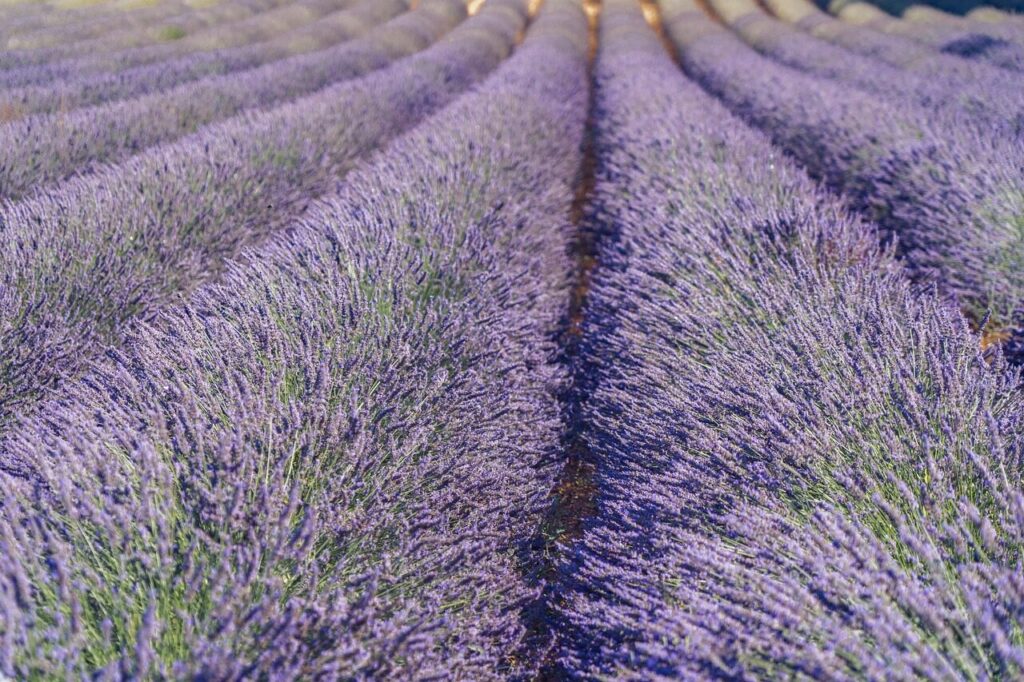
Lavender spreads gracefully across sunny beds, forming soft mounds of silver foliage topped with fragrant purple blooms that sway gently in warm breezes. Deer tend to avoid this plant because its strong essential oils and sharp aroma make the leaves unappealing to browse. Once established, it remains drought-tolerant and reliably attractive, drawing butterflies and bees while requiring minimal upkeep from the gardener. Its steady growth habit helps create a calming, cohesive look in borders, pathways, and open dry areas where other plants may struggle. This additional reflection reinforces its role in creating a steady, appealing layer within the landscape, allowing it to fit naturally alongside other plantings without drawing unwanted wildlife.
2. Creeping Thyme
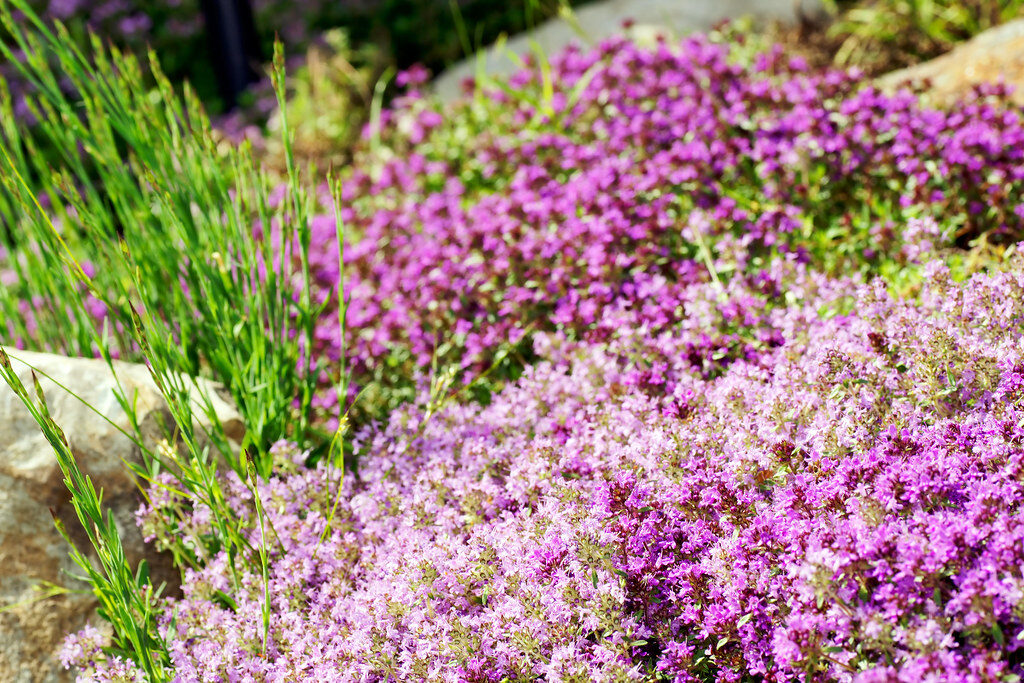
Creeping Thyme forms a dense, aromatic carpet that thrives between stones and pathways, releasing a pleasant herbal fragrance when touched. Deer generally avoid it because the scent and essential oils make the foliage undesirable for feeding. The plant enjoys full sun, well-drained soil, and warm conditions, spreading slowly into a colorful tapestry of pink or purple blooms. It handles light foot traffic surprisingly well and adds gentle texture to edges, rock gardens, and open spaces where a soft, low-growing cover is needed. This additional reflection reinforces its role in creating a steady, appealing layer within the landscape, allowing it to fit naturally alongside other plantings while discouraging deer from browsing.
3. Sweet Woodruff
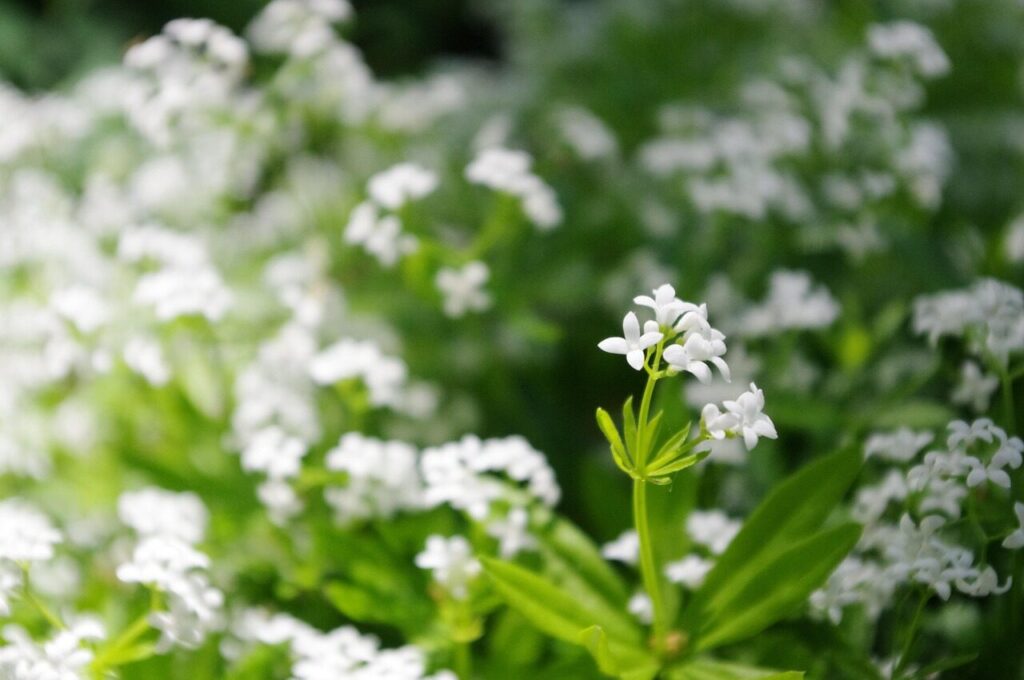
Sweet Woodruff offers star-shaped leaves arranged in delicate whorls, creating a soft green carpet that brightens shaded corners of the yard. Deer tend to avoid it because its sweet, hay-like fragrance becomes stronger as the leaves mature, giving the plant a distinctive scent that browsing animals dislike. It spreads steadily in cool, moist soil, filling spaces under trees or along shaded paths where turfgrass often fails. Its small white spring flowers add charm, while its easygoing nature keeps maintenance demands comfortably low. This additional reflection reinforces its role in creating a steady, appealing layer within the landscape, allowing it to fit naturally alongside other plantings without drawing unwanted wildlife.
4. Periwinkle

Periwinkle, known for its glossy evergreen leaves and violet-blue flowers, spreads quickly to form a lush, low-growing ground layer. Deer rarely bother it because its slightly bitter foliage and subtle fragrance make it less appealing than tender ornamentals. This plant adapts well to both sun and shade, rooting easily along trailing stems and covering large areas with minimal attention. Its resilience makes it ideal for slopes, woodland edges, and borders where dependable coverage is needed throughout the year. This additional reflection reinforces its role in creating a steady, appealing layer within the landscape, allowing it to fit naturally alongside other plantings while helping keep deer from feeding on the area.
5. Pachysandra
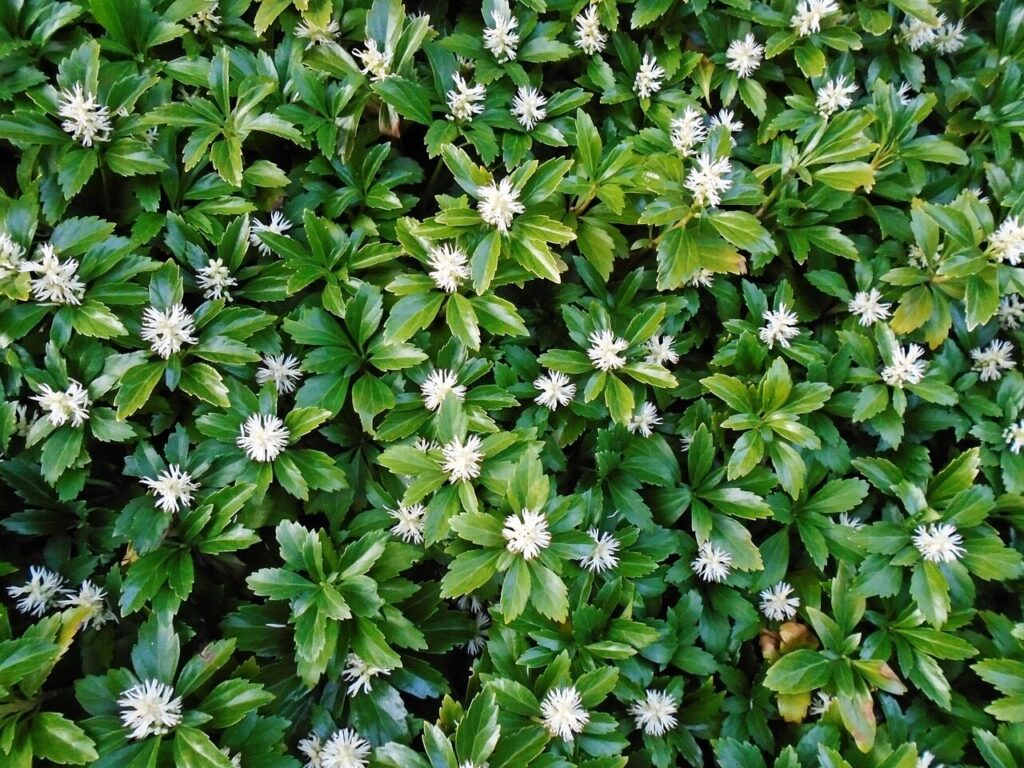
Pachysandra is a shade-loving classic with deep green leaves and tidy clusters of small white flowers that bloom in early spring. Deer typically avoid it due to its leathery foliage and faint, resin-like scent, which make it uninviting for browsing. The plant spreads through rhizomes, forming a uniform carpet that suppresses weeds and thrives beneath mature trees where other plants decline. Its tolerance for poor soil and irregular moisture makes it a hardworking choice for gardeners wanting structured, reliable coverage. Its steady presence blends effortlessly with surrounding plants, providing dependable ground coverage that remains largely untouched by deer
6. Creeping Juniper

Creeping Juniper creates a rugged evergreen mat that withstands heat, drought, and poor soils, making it an ideal ground cover for large sunny spaces. Deer avoid it because its needle-like foliage and strong resinous scent are unpleasant to chew. The plant spreads outward in attractive blue-green or silvery tones, anchoring soil on slopes and stabilizing rocky areas with ease. Its year-round color and minimal maintenance needs make it a long-term, visually grounding element in expansive or challenging landscapes. This additional reflection reinforces its role in creating a steady, appealing layer within the landscape, allowing it to fit naturally alongside other plantings without drawing unwanted wildlife.
7. Bugleweed
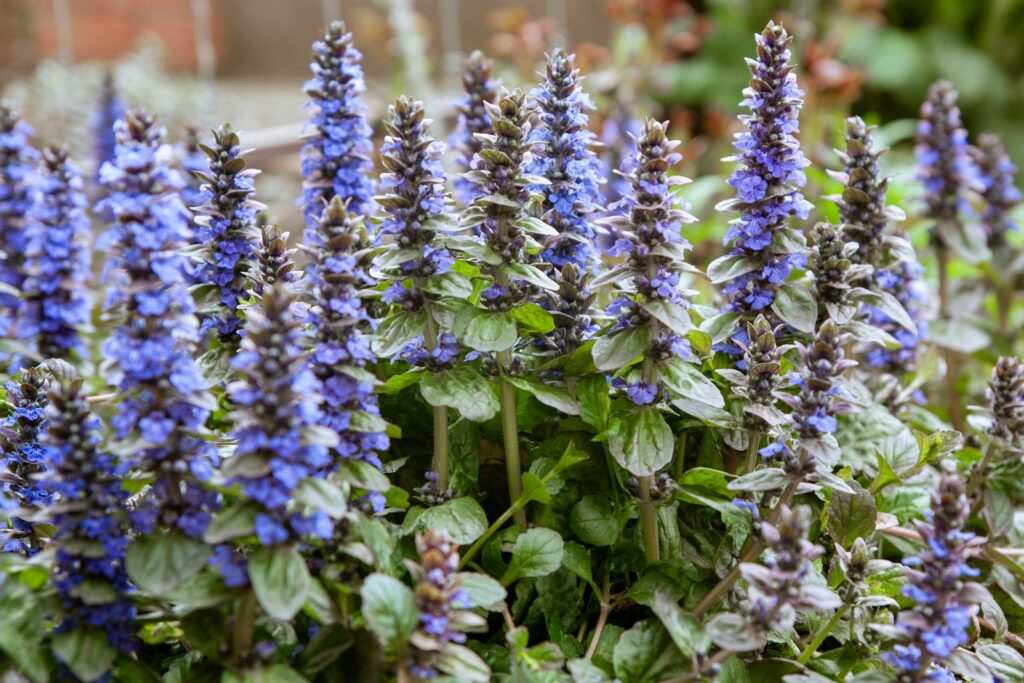
Bugleweed forms a low, spreading carpet of glossy leaves that range from deep green to bronze, depending on the variety. Deer generally disregard it because its slightly bitter foliage and dense growth pattern make it less appealing as forage. In spring, it sends up short spikes of blue or purple flowers that add a vivid pop of color to borders and shaded areas. The plant grows well in part shade, adapting to varying soil conditions and helping suppress weeds with its tight, fast-growing habit. Its consistent growth helps it blend smoothly with nearby plantings, offering reliable coverage that deer are unlikely to disturb.
8. Lamb’s Ear
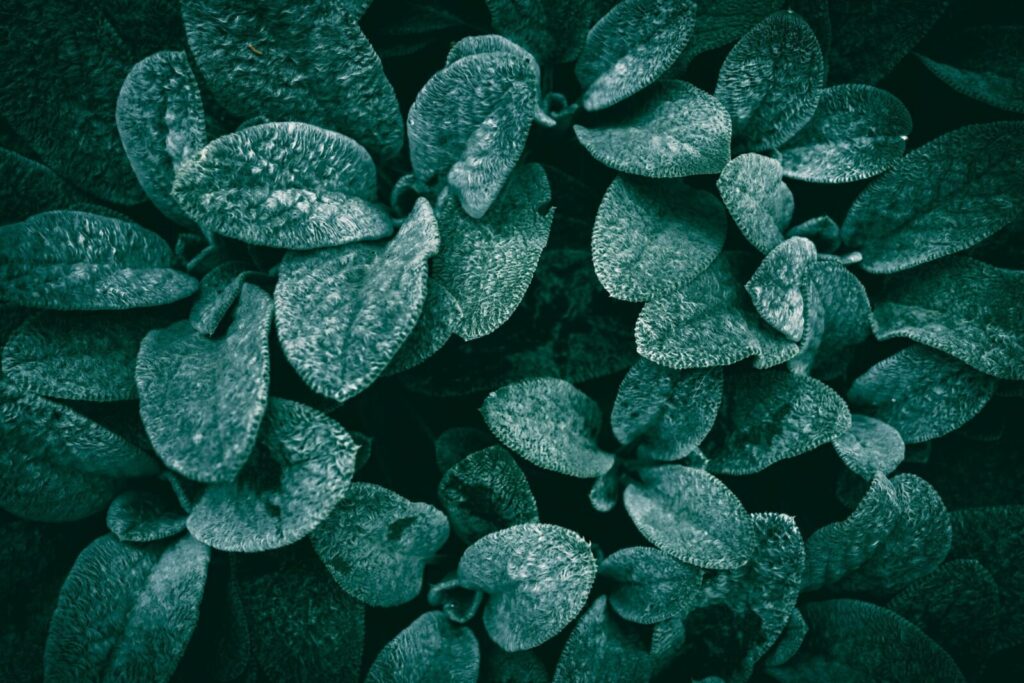
Lamb’s Ear is instantly recognizable for its velvety silver leaves, which create a soothing visual texture along borders and pathways. Deer tend to avoid it because the fuzzy surface and faint medicinal scent make the foliage unappetizing. The plant spreads slowly to form soft, low mounds that reflect sunlight and brighten garden edges. In summer, tall flower spikes emerge, attracting bees while remaining unappealing to wildlife. Its drought tolerance and preference for full sun make it a dependable, tactile ground cover. Its consistent, low-growing habit allows it to blend naturally with surrounding plants while offering dependable coverage that deer typically leave untouched.
9. Corsican Mint
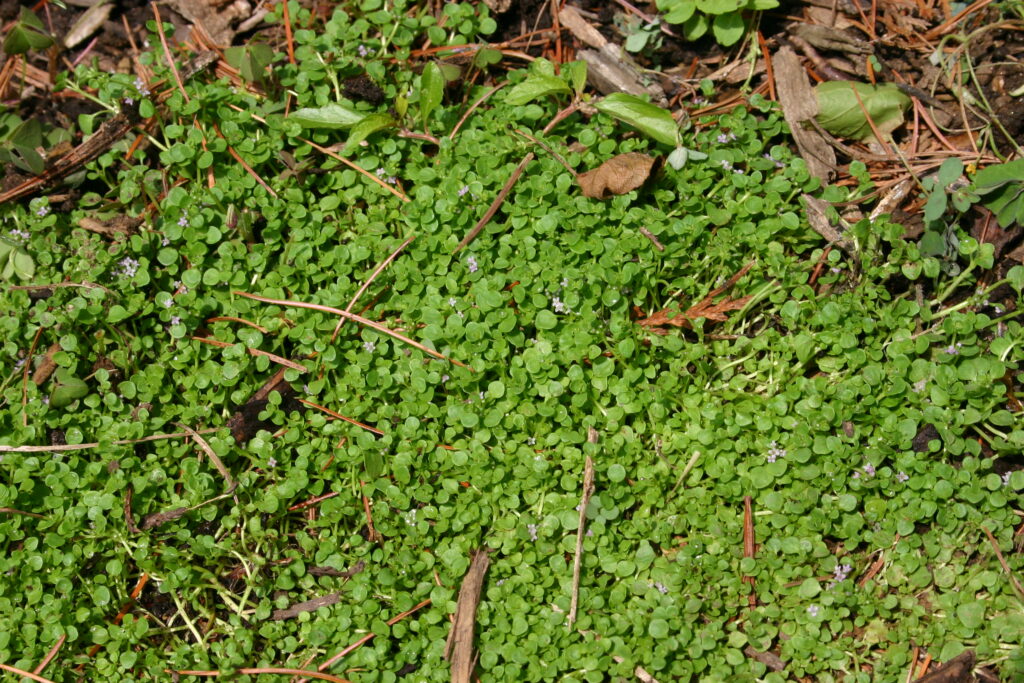
Corsican Mint creates a low, vibrant green mat with tiny, round leaves that release a strong minty fragrance when stepped on or brushed. Deer usually avoid it because the potent aroma overwhelms their sensitive senses and makes the foliage unpleasant to eat. The plant thrives in cool, moist areas, spreading gently between stones and along shaded paths to create a fragrant, cushion-like cover. Although small in stature, it offers surprising richness in texture and scent, making it a lively addition to quiet corners. It’s soft, aromatic growth blends easily with nearby plantings, offering a reliable ground layer that deer are unlikely to disturb.
10. Blue Star Creeper
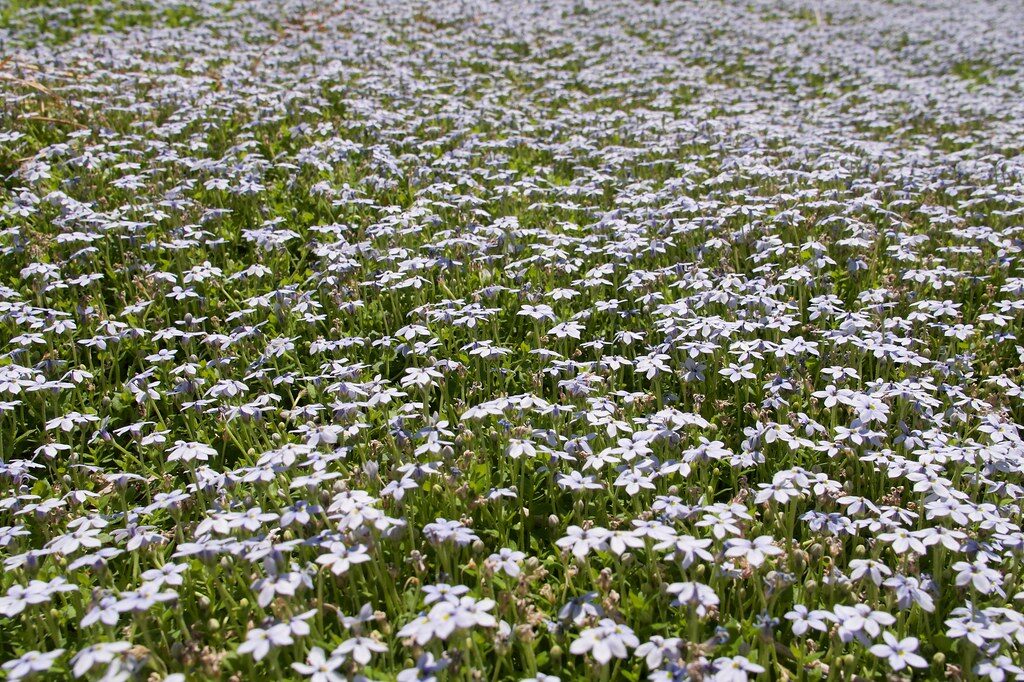
Blue Star Creeper develops a fine-textured ground layer dotted with delicate sky-blue flowers that appear throughout the warmer months. Deer tend to avoid it because its slightly bitter leaves discourage nibbling. The plant spreads evenly across open soil, between stepping stones, and along pathways, creating a soft carpet that tolerates regular foot traffic. Adaptable to both sun and partial shade, it maintains a tidy, inviting look while requiring only light attention to keep its gentle growth in balance. Its even, low-growing habit allows it to blend naturally with surrounding plants, providing dependable coverage that deer typically leave alone.
Comments